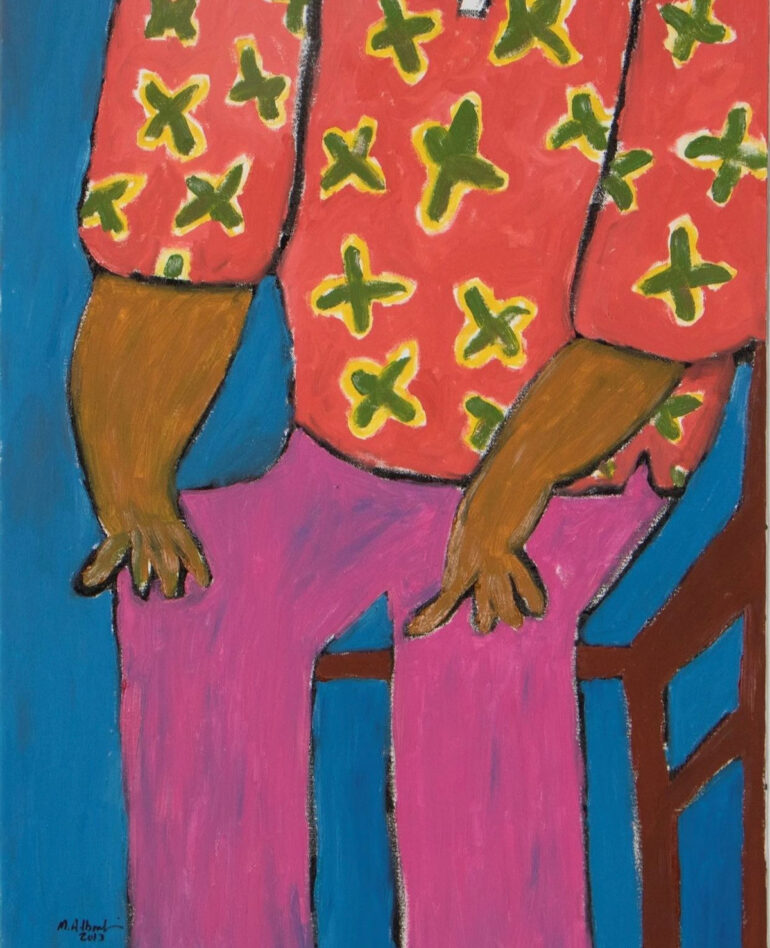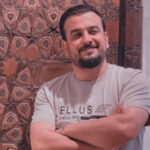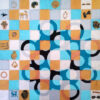The Image – The Current
Today, the image minimalizes the whole existence, and reproduces our view of the world. Not as a tool or a reflection, or even a representation or a copy, but as the subject, the origin, and the actual presence. This is what the image does to us, not what we do! This strange situation that may call for condemnation makes us prisoners to this image, so we’re always simulated in a world ruled by forged image products. This gives researching it high importance.
Speaking about the current image, with all of its fragments, unique features, and recurrence, is speaking about the simulated and the illusionary, or about the Simulacra, meaning the fake (phantom) image, which requires us to reveal its dominance on the human mind, by means of hiding the truth, replacing reality with an effective and suggestive version, so much that it turns into the truth. It is also the simulated identity that stripped symbols from all of their semantic meanings, leading to the image to be, in the absoluteness of its meaning, referring to an illusion that simulated a version of the truth, declaring that it is the formal version of the truth, even though it has nothing to do with it. This is what we can describe as hyper-reality, not in the sense that it is higher, but as an illusion. This is the hyper-reality, where the image consumes the event! “In the sense that it absorbs it and offers it for consumption. Admittedly, it gives it unprecedented impact,… Rather than the real being there first, and the frisson of the image being added to it, The image is there first, and the frisson of the real is added”(1), the reality becomes an image or the image becomes a reality, thus exhausting all proofs of the original reality by creating many copies and multiplications.
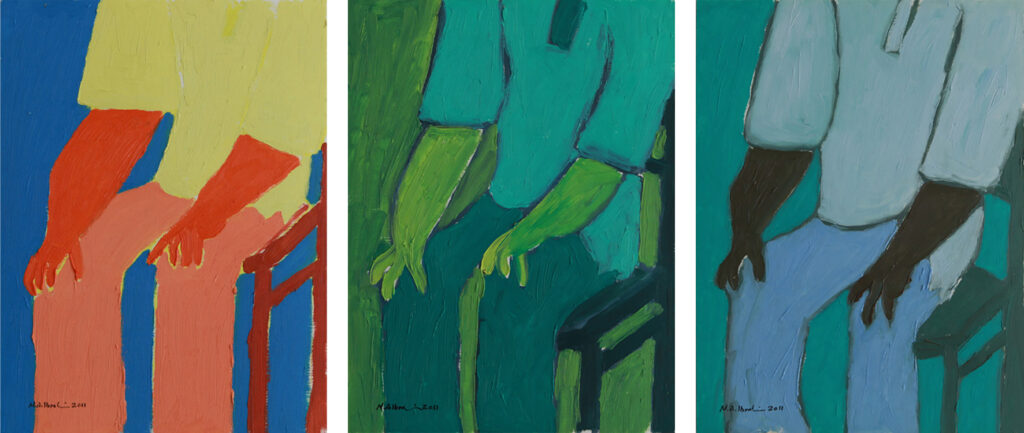
Everything we see today is a hyperreality, it is so beyond reality that it shifts the meaning. The image becomes affiliated with meaning, so much that it contains it and even stores it. This is a tough challenge in our lives “that a sign could refer to the depth of meaning, that a sign could be exchanged for meaning and that something could guarantee this exchange… Then the whole system becomes weightless, it is no longer itself anything but a gigantic simulacrum – not unreal, but a simulacrum, that is to say never exchanged for the real, but exchanged for itself, in an uninterrupted circuit without reference or circumference”(2). In this sense, the references to reality die, and standards and universality of truth come to an end. For that, searching for simulation and revealing it starts by knowing it, then going through the production of the image and the art, to marketing them, and then publicizing them. Perhaps Baudrillard, along with others, are seeking to reduce complex events (simulated) to categories like simulation or hyperreality which illuminates the virtual and high-tech dimension to media events.(3)
Some artworks tried to derive from Baudrillard directly, as the artists have incarnated the concept stating that we’re living in an era where the simulacras and symbolic representations are dominating our world, and even people. Peter Halley, an American artist-painter born on September 24, 1953, in New York-USA, is one of the artists who conceptualize it. he tried to create some artworks signifying this dimension that reduces things into a sign or a color, henceforth, some consider him a Reductionist.
The thresholds of the image and its transformations
The successive phases of the image and the shifts in its relation to reality as a reference and to the truth as a referral could be traced as follows:(4)
- it is the reflection of a profound reality;
- it masks and denatures a profound reality;
- it masks the absence of a profound reality;
- It has no relation to any reality whatsoever; as it is its own pure simulacrum.
In an age where the mass media are everywhere, in effect a new reality – hyperreality – is created, composed of the intermingling of people’s behavior and media images. The world of hyperreality is constructed of simulacra – images that only get their meaning from other images and hence have no grounding in an “external reality”.(5)
“One might dream of a happy conjunction of idea and reality, cradled by the Enlightenment and modernity, in the heroic age of critical thought. Yet critical thought is in substance ended, just like the ideal relation between concept and reality, as it has broken down under pressure from a gigantic technical and mental stimulation, to be replaced by the autonomy of the virtual, henceforth liberated from the real and a simultaneous autonomy of the real which we see functioning on its own account in a demented — that is, infinitely self-referential — perspective.”(6)
The Media and The Image, and Producing Meaning:
Regarding media and its relation to the image, meaning, and truth, it is mainly one of these categories:(7)
- Either information produces meaning but cannot make up for the brutal loss of signification, and loss in meaning. In this case, one must appeal to a base productivity to replace failing media.
- Or information has nothing to do with signification. It is something else outside meaning, it is only a technical medium that does not imply any finality of meaning.
- Or, very much on the contrary, it has a rigorous and necessary correlation with the meaning, to the extent that information is directly destructive of meaning and signification.
The last hypothesis is the closest, where media produces an accelerated circulation of meaning, a plus value of meaning homologous to the economic one that results from the accelerated rotation of capital. Information devours its own content. It devours communication and the social(8) and replaces it with dominance and mass media.
The consumer society-the scene-the simulated-the mass, seems to be holding its coffin. Society is on the verge of death, and this is the reality of contemporary societies, or post-modernism societies. These societies were rotting under the flood and the excessive amounts of consumption images, in advertising and in media authoritarianism, that turned them into a subject, a receiver, and a viewer. It is as if life were showcased in front of them, and they’re providing their insights, while standing far, not to affect, but because they’re affected. Baudrillard associates the nature of the scene-society and the political action so he raises this question: is it plausible to consider an image that refers to nothing but itself, an image? Thus ignoring itself – and this is a political problem – when TV turns into a strategic and virtual space for the event, it becomes a screening tool, where the real subject is eradicated in favor of the virtual subject at the hands of the media.(9) All the events, those happened and are happening, cannot be spoken of or represented as much as the images are producing events and speaking of them. Therefore, they’re simulating what we want, and what we don’t want, only as much as they want to, as it is the ultimate medium for the dominance of media. We have to recognize the role of simulacra in deceiving people into believing in imagery topics that never truly occurred.
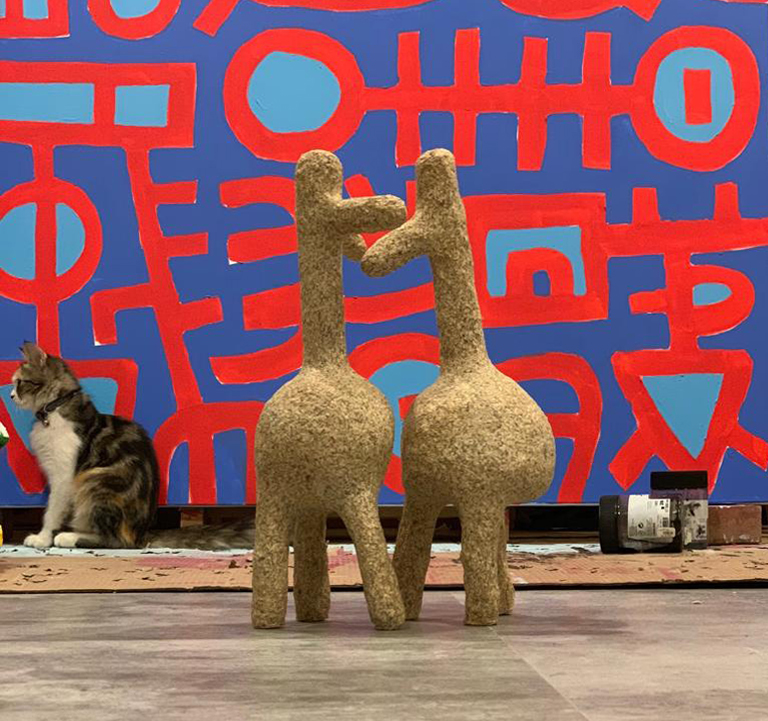
Misleading and Forgery: Tools and Systems
Misleading is the dominance of simulacra and media-lacra, and turning the individual into a machine in virtual reality. A reality that is injured by technology, and entangled with forgery to the extent of drowning. The disassociation with all this misleading can only be done via diagnosing its source and quiddity, and they are:
- Globalizing system and its deterring policy.
- The capitalism system and its consumption policy.
- The media system and its forgery policy.
This gives us a clearer image, as the triad of the politic, the economic, and the media are the chains of humanity’s freedom, and they are tools for deceiving and misleading it. We’re facing a new criticism of an ideology, but no classes can be seen here except what can we describe as the hyperreality class, the reality and what comes above. Hyperreality is the ideology with no ideological intellect, the ideology of lostness, the ideology of wandering into vanity.
Contemporary history seems in total an illusionary history of totalitarian authoritarianism that mastered the technical alienation of the individual. History seems like the prevalence of the technological truth, which always turns into the opposite, the system constantly employs other elements, and produces an advanced technological system, that later becomes unreal or not true due to its extravagance, illusions, and resulting in unanticipated consequences.(10) Therefore, the reality seems like an illusion, the war seems like a video game, and the political motive seems like a technical deception of the masses! This is a result of the simulated phantom image, that without exposing it, no scenario of liberation can be discussed.
1. Baudrillard, Jean, and Jean Baudrillard. 2003. The spirit of terrorism ; and, other essays. London: Verso. Pages 27 – 29
2. Baudrillard, Jean. 1994. Simulacra and Simulation, page 5-6.
3. Douglas Kellner, Jean Baudrillard after Modernity, Provocations on a Provocateur and Challenger,p24.
4. Baudrillard, Jean. 1994. Simulacra and Simulation, page 6
5. Giddens, Anthony. (1993). Sociology. Cambridge, England : Polity Press
6. Baudrillard, J. (1996). The Perfect Crime. United Kingdom: Verso.
7. Baudrillard, Jean. 1994. Simulacra and Simulation, page 79
8. Baudrillard, Jean. 1994. Simulacra and Simulation, page 150 – 151
9. Baudrillard, J. (2013). The Spirit of Terrorism. United Kingdom. Page 46.
10. Douglas Kellner, Jean Baudrillard after Modernity, Provocations on a Provocateur and Challenger, p24.
Professor of Contemporary Philosophy at the College of Arts - the University of Baghdad, founder and Chairman of the Arab Academic Association for Philosophy.

